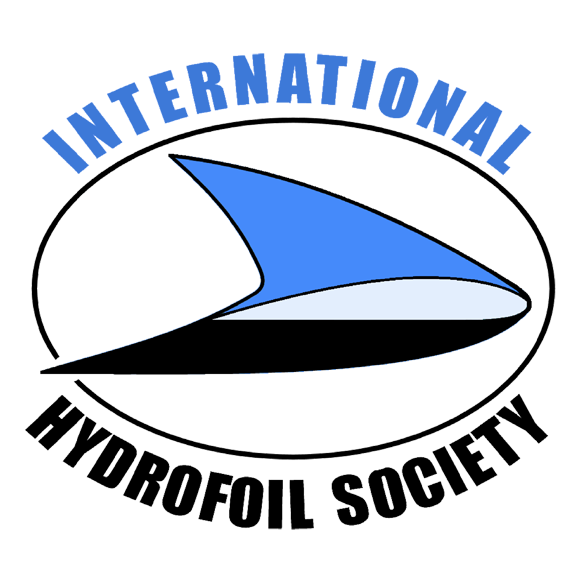International Hydrofoil Society Correspondence Archives…
Correspondence
Paper on Striking Logs
[9 May 02] I have an Adobe Acrobat PDF version of the paper: “Response of hydrofoil strut-foil systems after impact with ‘dead-head’ logs” by H.S. Levine and A.P. Misovec. Anybody who wants a copy of the paper please send me an email. Gunther Migeotte (gunther@cae.co.za)
Logs Are a Problem
[11 Mar 00] I think it was about 1986 or 87 when a group decided to try a ferry service between Vancouver and Victoria using the Boeing Jetfoil. One day I was out in the straight of Georgia in my 23 ft boat with Mercruiser 260 power and saw it coming. I was able to go along side of it for a while as it was fairly calm and my boats top speed was about 45 mph. Of course I was going full speed and he was cruising. Any way it is quite impressive to see this big boat up on stilts going fast, banking on the turns and motoring along. The service was not profitable and I don’t think it will ever be tried again. One concern in our part of the world is that of floating logs. These can be quite large, say 4 ft in diameter and 40 feet long. I can’t remember if the hydrofoil ever hit one but certainly everyone was concerned that it would. I don’t think it is designed for that so it is really not suitable for use around here. Also I understand the Jetfoil costs about as much as a 737 airplane which carries the same number of passengers and goes 15 times faster. — John Hards (johnhards@shaw.ca)
Watch Out For Logs…
[18 Nov 99] We are looking for a “log identifying equipment” to install on a hydrofoil operating in waters polluted with debris. We have spoken with many companies carrying radar/sonar equipment, but none seem to have anything suitable for our purposes. — Alyona (novocan@direct.ca)
Response…[21 Nov 99] Of all the work that was done by Boeing trying to develop a suitable sensor to detect the logs, deadheads (vertically floating submerged logs.), whales, etc., some were more successful in some situations but not all conditions. I was not privy to all the data, but only got comments now and then about the progress of their tests. Generally, in rough water conditions, the log and deadheads were covered up by the waves. In addition, even when the units were modified to use the higher frequencies, most sensors were overcome with flow noise of the foil/strut and sensor itself at well below the foilborne speeds. The other problem, the mammals, generally can sense the pressure wave of the bow of the ship and stay away from danger. With the hydrofoil, the mammal cannot sense the pressure wave of the forward foil early enough to escape. Jetfoil did hit a manta ray and did considerable damage. It is my opinion, in daylight operations, the helmsman can see most of the logs and mammals. It is the deadhead that cannot be seen. Most of the damage to the foil/strut/foundations that I can remember were caused by logs because when striking them broadside, the hydrofoil is trying to accelerate the floating log from zero to ship’s speed. Striking the top end of the deadhead with the foil causes the deadhead to deflect at some angle which is considerably less force than the broadside hit of a log. I can recall being on HIGH POINT when strikes of deadheads were encountered, with only a mark on the paint to confirm that the noise we heard was a strike. I believe some work was done on USS PEGASUS with an infrared camera. The video tapes shown to me looked like most floating objects were visible. Of course, it will not pick up deadheads. — Sumiyasu Arima (arimas1@juno.com)
Response…
[21 Nov 99] I recall a nice photo in an old Supramar brochure that showed a picture of a moderately-sized log which had been neatly sliced in half by one of the hydrofoils of their design. Apparently, that had caused minimal damage to the foil surface. So perhaps that is the most expedient solution – build the foils solidly enough to deal with the ‘average’ floating debris! I know this is not much help to an operator like Alyona who is apparently encountering problems with an existing design. — Martin Grimm
Response…
[21 Nov 99] The only log finder that is currently available is the human eye. When Boeing was test hydrofoils in Puget Sound, they were faced with the problem all the time. All of the hydrofoils took a hit. Good eyes in the day, and at night… it’s a real problem. — John Monk (marymonk@msn.com)
Attack of the Killer Logs
[14 Aug 99] (The email to which this is a reply is removed at the author’s request – Editor) Drift and logs depending on the size of the hydrofoil can certainly be a problem. In the case of the Jetfoil, having been on the program at Boeing, I am not aware of a single case when a Jetfoil was made non-operational due to hitting a log. I was on a Jetfoil flying into Vancouver’s inner harbor when a deadhead was hit by the starboard aft strut pod. Although the pod fairing was damaged, the boat continued on to Seattle without repairs; in fact the damage was not even realized until its arrival in Seattle. With the exception of jet pump powered craft, high speed craft of any type are put out of service when they hit something too large. Hydrofoils experience such damage as do other craft. However with hydrofoils the damage is more often not to the propulsive appendages, i.e. propeller. The struts usually encounter the drift or log first. The struts and foils of a hydrofoil are typically much stronger than a propeller and its shafting. (In smaller fast boats this gear is usually not protected by a keel.) In any case you’re right: lakes e.g. Lake Washington, don’t have much drift and they do, for small boats, due to boat traffic, have large waves. You might try answering your own question and I’m curious, why haven’t you bought a hydrofoil? Your answer may be the reason that so few have bought them historically. — Harry Larsen (talaria@foils.org)

